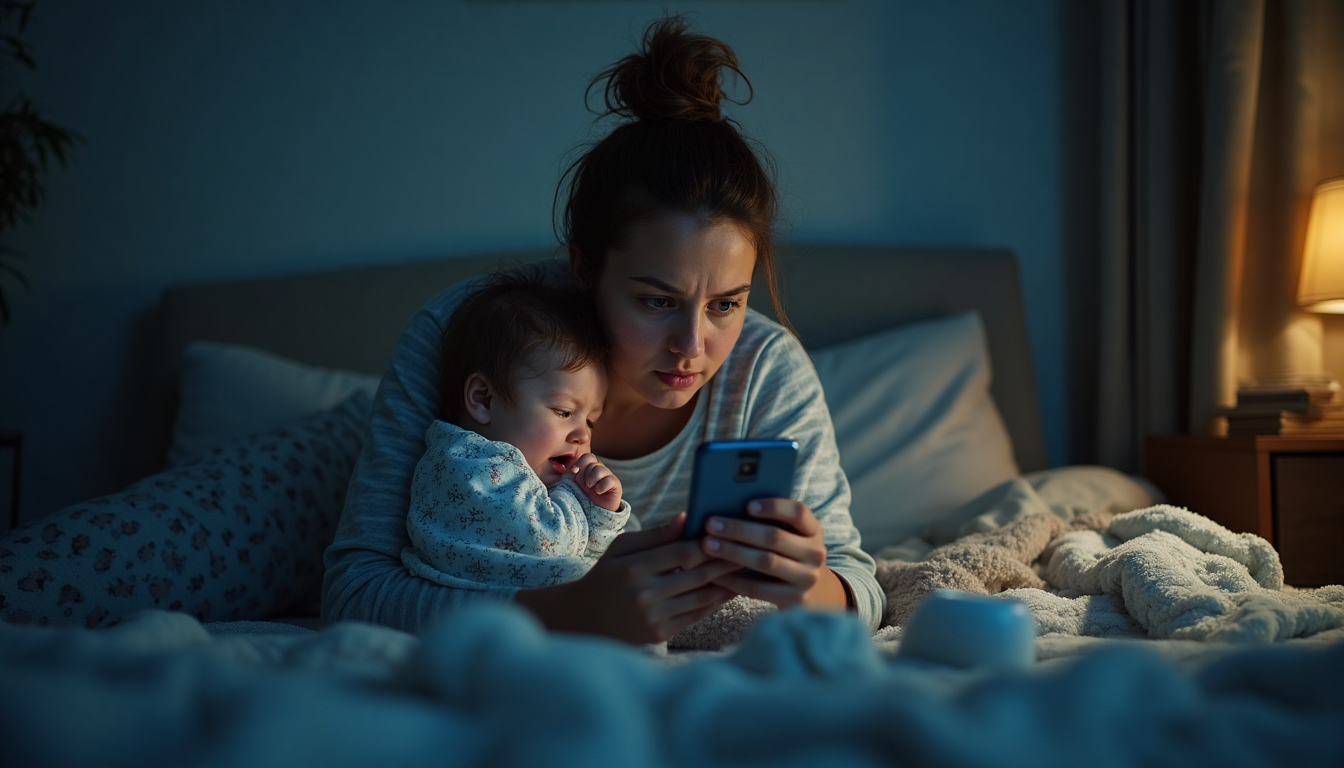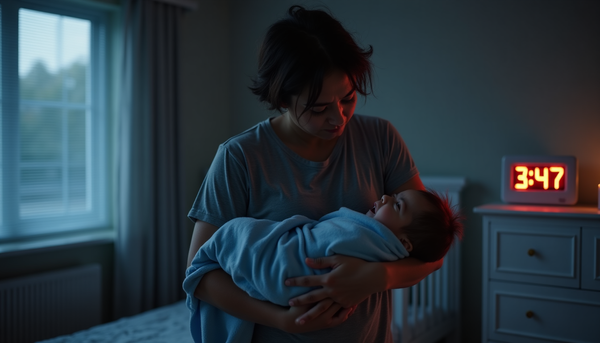The Sleep Product Trap: What Actually Works (And What's Just Marketing Fluff)

Let me paint you a picture: It's 3 AM, your baby has been awake for two hours straight, and you're scrolling Amazon with one hand while bouncing a crying infant with the other. Sound familiar? If you've been there, you know that desperate feeling where you'd literally buy a $300 magic sleep suit if someone promised it would give you three consecutive hours of sleep.
I've been that parent. Hell, I was that parent for longer than I care to admit. My Amazon cart looked like I was preparing for some sort of sleep apocalypse – swaddles, sound machines, special mattresses, transitional sleep suits that looked like tiny spacesuits. Some of these things were game-changers. Others? Well, let's just say my storage closet tells a different story.
Here's what I wish someone had told me before I went down the baby sleep product rabbit hole: Not every product works for every baby, and you definitely don't need everything the internet tells you to buy.
The Real Talk About Sleep Products
Before we dive into what actually works, let's get something straight. The baby sleep industry is massive – we're talking billions of dollars massive. And guess what feeds that industry? Exhausted parents who are willing to try anything.
That doesn't mean all these products are scams. Some are genuinely helpful, even lifesaving. But here's the thing that took me way too long to figure out: the key isn't finding the perfect product. It's finding the right product for your baby and your specific situation.
My neighbor's baby slept like an angel in a basic sleep sack from Target. Meanwhile, my little one needed what felt like a full NASA sleep system to get comfortable. Neither approach was wrong – they were just different.
The Strategic Approach: Think Systems, Not Individual Products
Instead of randomly buying products based on Amazon reviews (guilty as charged), I learned to think about baby sleep in terms of systems. Here's how I break it down:
1. The Containment System (Swaddles, Sleep Suits, Sacks)
This is probably where you'll spend most of your energy in those early months. Babies have this lovely thing called the startle reflex that basically means they wake themselves up by flailing their arms around. Fun times, right?
The Love to Dream Swaddle that everyone raves about? It's actually pretty brilliant because it works with your baby's natural tendency to put their hands up near their face. I remember thinking it looked weird when I first saw it – like my baby was perpetually surrendering to sleep. But for babies who fight traditional arms-down swaddles, this can be a game-changer.
The transition products (like the 50/50 version or the Zipadee-Zip) are where things get interesting. Here's what nobody tells you: the transition from swaddling is often harder on parents than babies. We get so attached to what worked that we're terrified to change it. But most babies adapt faster than we think they will.
Real talk: Don't feel like you need to buy every transitional product. Sometimes going cold turkey from swaddle to sleep sack works just fine. Sometimes it doesn't. You won't know until you try.
2. The Environment System (Mattress, Blackout, Sound)
This is where I think parents should actually invest their money, because a good sleep environment benefits everyone for years.
That Newton mattress sounds amazing in theory – breathable, washable, all that good stuff. Is it worth $300+ when a standard firm mattress meets safety requirements? Honestly, that depends on your budget and anxiety level. I went with a standard mattress and slept just fine (when the baby let me, anyway).
Blackout blinds, though? Total game-changer. Not just for baby, but for your own sanity during those summer months when the sun decides to rise at 5 AM. The Gro Anywhere blinds are convenient for travel, but honestly, some heavy-duty aluminum foil and painters tape work almost as well for a fraction of the cost.
White noise is probably the best bang for your buck in this category. But here's a secret: you don't need a fancy machine. A basic app on an old phone works perfectly fine. Though I will say, having a dedicated machine means you're not tied to your phone.
3. The Comfort System (Pacifiers, Loveys, Transition Objects)
This is where things get really personal to each baby. The WubbaNub is genius for babies who constantly lose their pacifier, but some babies couldn't care less about pacifiers. The key is observing what actually comforts your baby.
That Cloud B aromatherapy thing? Look, if scented stuffed animals are your vibe, go for it. But plenty of babies find comfort in a simple muslin cloth that smells like you.
What I Actually Use (And What's Collecting Dust)
Let me get real with you about what made it through the great product purge of year one:
Still using:
- Basic white noise machine (going on 3 years strong)
- Blackout curtains (not the fancy portable ones)
- Simple sleep sacks for toddler phase
- One good comfort object (a plain teddy bear, not the high-tech version)
Collecting dust:
- Three different swaddle brands (because apparently I needed options?)
- Smart monitor with all the bells and whistles (basic audio monitor works fine)
- Multiple transition sleep products
- Specialized night light that cost more than my first car payment
Budget-Friendly Alternatives That Actually Work
Here's what I wish I'd known before dropping serious cash:
Instead of expensive swaddles: Try the basic Halo sleep sacks first. They're like $20 and work for tons of babies.
Instead of smart monitors: A simple audio monitor and your parental instincts work better than you think. Those fancy breathing monitors mostly just gave me more anxiety.
Instead of multiple white noise machines: Download a white noise app and use an old phone or tablet. Boom. Portable, customizable, and free.
Instead of fancy night lights: A simple red LED light is all you need for nighttime checks. Your phone flashlight with a red filter works too.
The Products Worth the Investment
That said, there are a few categories where spending more actually makes sense:
A really good mattress – whether it's the fancy breathable one or just a high-quality standard mattress. Your baby spends a lot of time on it, and it needs to last through multiple kids.
Proper blackout coverage – this pays dividends for years. Even if you start with the budget version, invest in real blackout curtains eventually.
One quality comfort item – whether it's a WubbaNub or a simple lovey, having something that truly comforts your baby is worth its weight in gold.
My Honest Product Recommendations
If I had to start over with what I know now, here's what I'd buy:
For newborns (0-3 months):
- Two different swaddle options (because babies are unpredictable)
- Basic white noise machine
- Simple night light
- Standard firm mattress
For the transition phase (3-6 months):
- ONE transition product (not three like I bought)
- Sleep sacks for when swaddling ends
- Blackout solutions
For older babies (6+ months):
- Comfort objects they can self-soothe with
- Maybe a toddler clock for later
The Bottom Line (And Action Steps)
Here's what I want you to take away from this: You don't need to buy everything at once. Start with the basics, see how your baby responds, then add strategically.
Before you buy anything new, ask yourself:
- What specific problem am I trying to solve?
- Have I tried non-product solutions first?
- Will this still be useful in 3-6 months?
- Can I try a cheaper version first?
Start here: White noise, blackout solutions, and one good swaddle option. See how those work before adding more complexity.
And remember – the best sleep product in the world can't fix inconsistent routines or unrealistic expectations. Sometimes the most "basic" setup works perfectly because consistency matters more than innovation.
Trust me, your future self will thank you for not having a closet full of expensive baby gear that got used for exactly two weeks. Focus on what actually helps your family sleep, not what Instagram tells you to buy.
What sleep products have been game-changers for your family? And more importantly, what expensive mistakes have you made? Drop a comment – we're all learning from each other's trial and error here.




